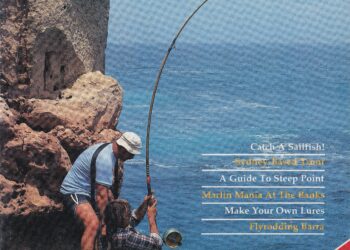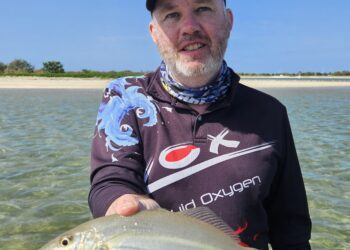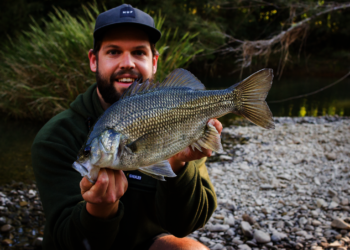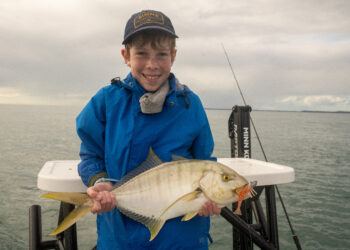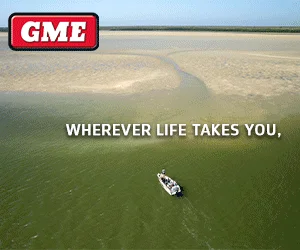IF you want to consistently catch decent fish you need to be able to consistently tie good knots. Sure, you hear stories of fishos fluking a monster jewie or snapper on crappy gear and low grade knots, but to land big fish on a regular basis means you need to have your act together. This doesn’t mean you need to tie the most complex knots around or do a Ph.D in rigging. I often think many anglers over complicate their rigs when a simpler method would provide comparable results.
To maximise your efficiency on the water you need to be disciplined and stick to a few basic rules (such as the following favourites of mine). If you follow these sort of fundamental fishing basics you’ll find you’ll soon be catching more fish!
(1) Look after your line: If you fish hard and often, you should regularly replace your reel’s working line load. I’m a devotee of top-shotting as the line at the bottom of the spool rarely, if ever, sees the light of day. I think I’ve only been spooled once in my fishing career and that was while live baiting the rocks at Port Stephens by a fish that was way too big for the light tackle I was fishing. Also, don’t tolerate worn or abraded fishing line. If you feel any nicks in the line, cut it off and rig again. If I’m going away on an extended fishing trip to the tropics or overseas I always spool all my reels up with new line prior to leaving. It’s false economy to spend thousands of dollars on the trip of a lifetime to get there and lose that giant barra/marlin/tarpon you’ve dreamed about because you were too slack to spool up a few reels. Fishing line, particularly monofilament, is still relatively cheap when compared to air fares and accommodation. Despite the big swing over to GSP braided lines in recent years, I’m still a big fan of mono for fishing where lines are exposed to abrasion from rocks and barnacles. You just can’t beat a tough mono such as Rovex 10X for chasing drummer or high speed spinning off the rocks, in my opinion.
(2) Stay sharp: As far as hooks go if they’re traditional patterns they shouldn’t go in the water without being sharpened. I have a good set of rigging tools with me on all trips that includes a diamond file for small hook patterns, a small smooth file for heavier hooks, a pair of quality split rings pliers, and a pair of cutters that can cut both GSP and mono lines. Chemically sharpened hooks have certainly made things a lot easier these days, although I must admit that some brands seem to lose their points relatively quickly and require re-sharpening. Make sure you never put used hooks back in the packet with your new ones. For hooks used in saltwater that is a guaranteed recipe for a corrosion ruined hook supply. Many experienced anglers only take a small container containing the amount of hooks they’ll require for the session and leave the remaining bulk packets at home.
The range of hooks, trebles and jig heads out there these days is mind-blowing. Anglers have never had it so good. These days I’m keeping a log of the really good patterns and what they are particularly suited to chasing. For instance, I try a certain type of lead jig head for chasing dusky flathead with soft plastics so I’ll record the brand of jig head, the style, the weight and the hook size. I’ll also record what style of soft plastic tail and the fishing scenario that the jig head best suits.
Many of the lures now being imported into the country are equipped with inferior hooks and split rings that just aren’t up to coping with the pressure exerted on them by our high-powered sportfish. It pisses me off no end that you have to pay good money for a lure only to throw the crappy hooks and rings in the bin, but that’s just the way it is, unfortunately. Replace them with quality terminals appropriate for the species you’re targeting.
(3) Go light: Fish definitely aren’t getting any easier to catch so be open to embracing new technology such as fluorocarbon leader material and trying out new knots. Always remember that lighter lines will get you more bites in the long run. When rigging take your time forming your knots and pulling them up, and always lubricate them with saliva to avoid friction damage. Any knot that doesn’t appear to have pulled up and formed correctly should be rejected, cut off and tied again. Once the knot is complete take care to cut the tag end off without damaging the formed knot. With practice you’ll come to know how close you can cut off the tag end for each different connection. Work at developing a range of quality knots that will cover all fishing and rigging situations. Practice them till you are competent to tie them in all circumstances, particularly under pressure when you need to get back in the water quickly to take advantage of a hot bite.
(4) Keep it clean: Lastly, ensure you pick up your rubbish – especially discarded fishing line – at the end of the day and take it home to be disposed of responsibly. Recreational anglers have never before been under such scrutiny from green groups and government authorities so it’s up to all of us to do the right thing.












